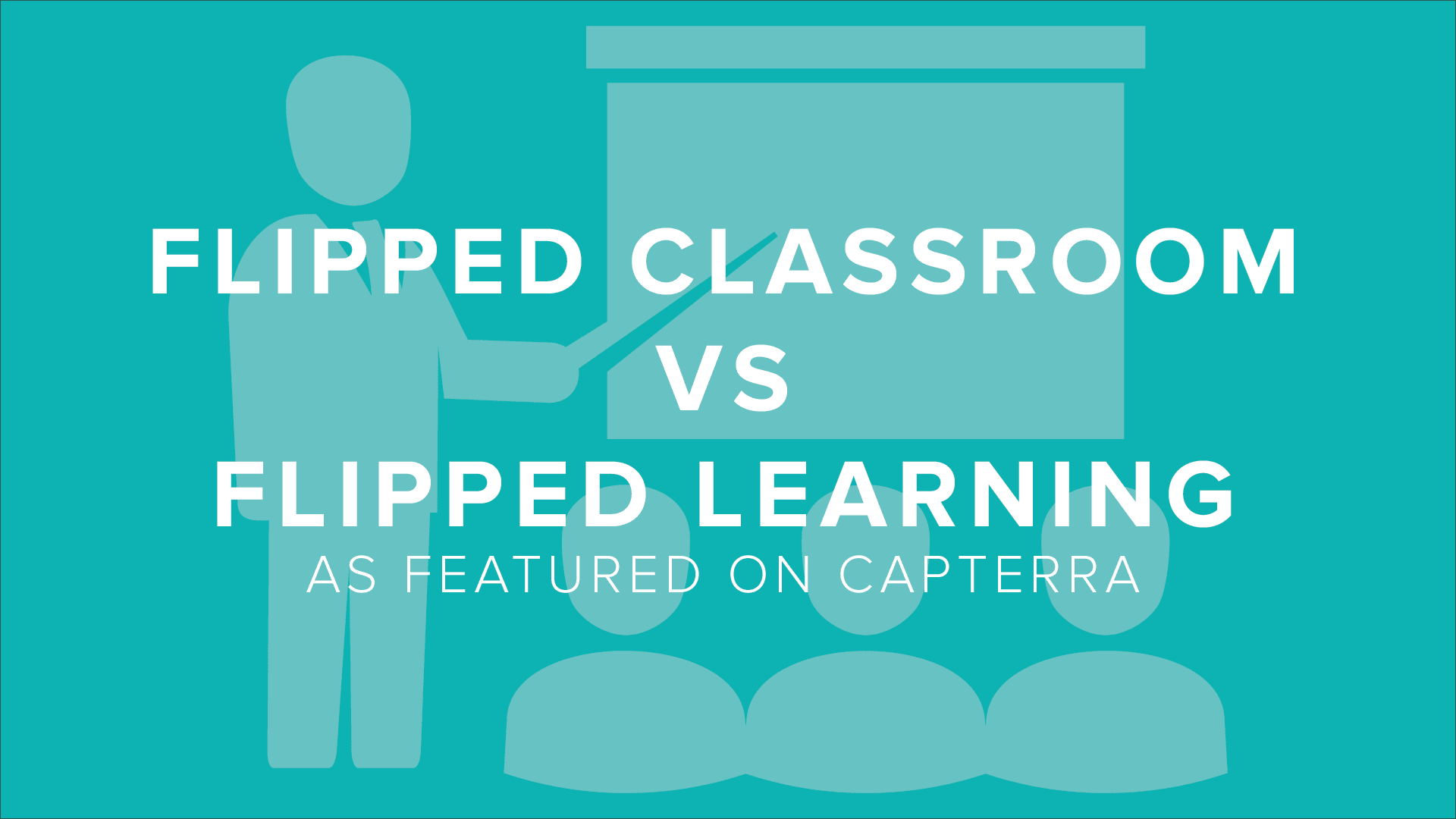*We have partnered up with Capterra to share the difference between a flipped classroom and flipped learning. You can view the full guest post on their blog here.
If you are familiar with the eLearning world, then you’ve most likely heard the terms “Flipped Classroom” and “Flipped Learning”. In fact, it is a common misconception that two terms are the same. However, they cannot be used synonymously. So, what’s the difference?
Flipped Classroom
A Flipped Classroom is “a form of blended learning in which students learn content online by watching video lectures, usually at home, and homework is done in class with teachers and students discussing and solving questions. Teacher interaction with students is more personalized – with guidance instead of lecturing.”
The Flipped Classroom is growing in popularity and has the statistics to back it up:
• In 2012, 48% of teachers flipped at least one lesson – in 2014 it grew to 78%.
• 9 out of 10 teachers noticed a positive change in student engagement since flipping their classroom (up 80% from 2012).
• 71% of teachers indicated that student grades have improved since implementing a Flipped Classroom strategy.
Flipped Learning
Flipped Learning is “a pedagogical approach in which direct instruction moves from the group learning space to the individual learning space, and the resulting group space is transformed into a dynamic, interactive learning environment where the educator guides students as they apply concepts and engage creatively in the subject matter.”
The Four Pillars of F-L-I-P
- Flexible Environment
- Learning Culture
- Intentional Content
- Professional Educator
*Check out how we partnered with Capterra to share these great tips and see our full guest post here.

